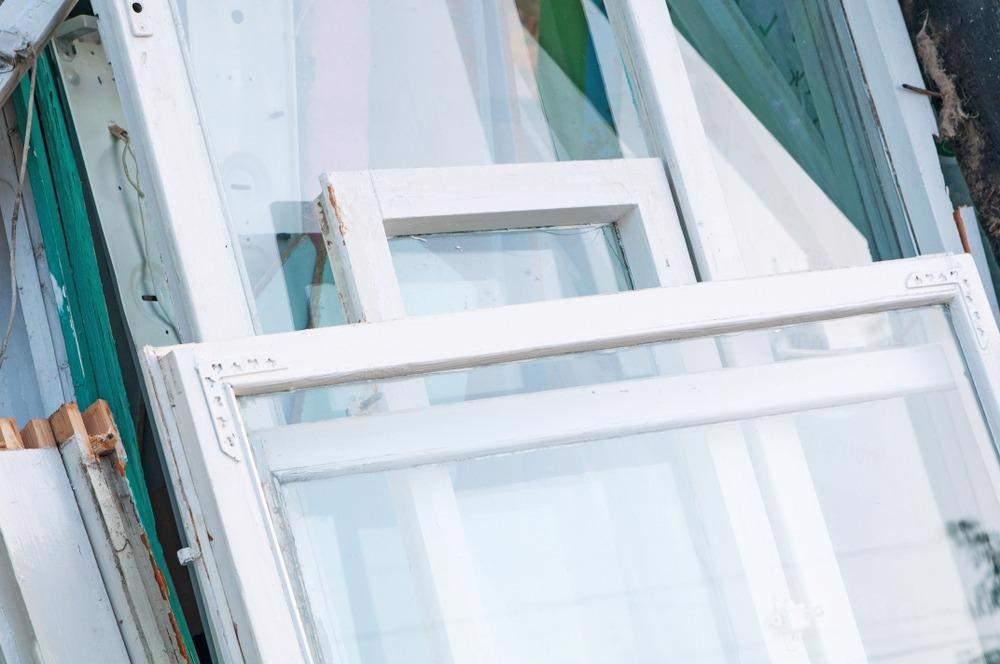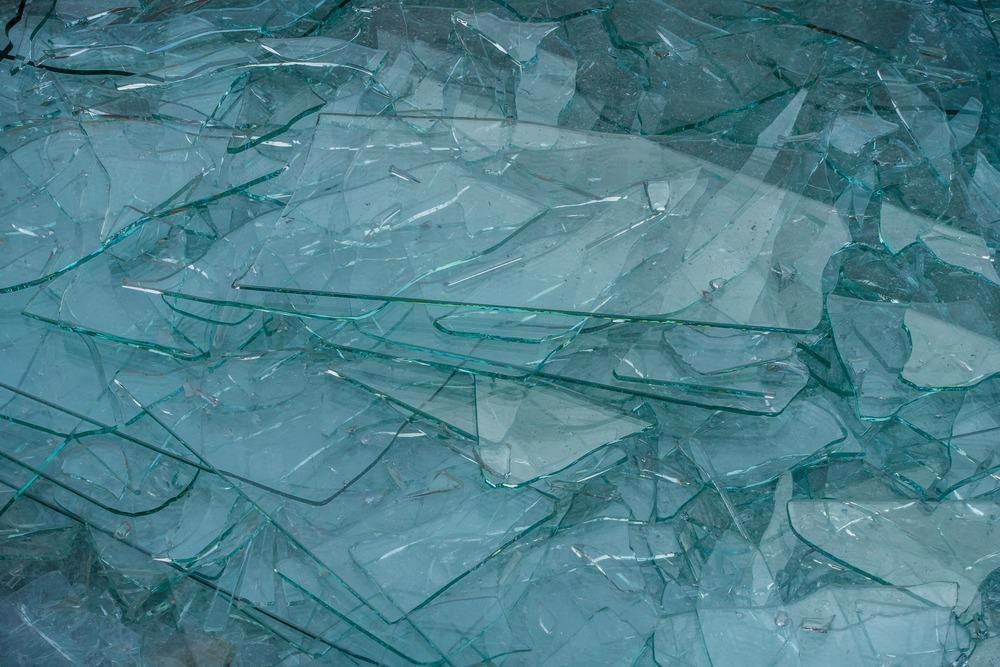The process of recycling waste material to be made into new products, materials, or substances has become highly important in the construction industry. Glass could be a highly reusable and recyclable material, but is rarely utilized to formulate new glass products. Contributing to the problem are outdated regulations and legislation surrounding the end-of-life building glass industry.

Image Credit: MelnikovSergei/Shutterstock.com
What Currently Happens to Used Building Glass?
Every year approximately 200,000 tons of glass in the UK alone is sent to dumpsites. Over 925,000 tons of landfill waste could be avoided by proper recycling of building glass. Additionally, over 1.23 million tons of raw materials utilized for glass manufacturing could be saved in the EU. By recycling, emissions will greatly be reduced and could prevent 230,000 tons of carbon from entering the environment.
Some of the common solutions for utilizing end-of-life glass materials are as aggregates for road construction, the manufacturing of glass wool insulation, and Ballotini products. However, the practice is a stop-gap to the major problem, that most of the end-of-life glass is sent to landfills. The most effective and economic use of end-of-life glass is to recycle it into new glass, consequently creating a closed-loop cycle.
The Glass Recycling Process
The recycling of glass involves several processes, the first one being collection. The glass is collected and transported to a recycling plant where it is sorted by color. Metal fragments are removed with a magnet and then washed thoroughly to remove any further impurities.
Later on, the glass is crushed into smaller pieces, making it easier for it to be melted and molded into anything, such as bottles or jars. This cycle is endless, as if conducted properly it can be repeated without hindering or losing the quality of the end product.
Current Regulations Do Not Promote Recycling
End-of-life building glass has low value, making the incentive to generate systems for the collection and recycling low. European regulatory frameworks do not further incentivize the recycling process.
Both the waste framework directive and the landfill directive do not have adequate or specific targets for glass recycling. The waste directive has a target of 70% reuse and recycling of construction and demolition waste, whereby glass makes up less than 1%. Hence, by recycling 0% of end-of-life glass the target could be achieved.
The landfill directive does not present any measures regarding glass, as it is relatively easy and inexpensive to send glass to landfills.
The Glass Industries Support Change
Much of the glass industry is in support of better practices for the collection and recycling of end-of-life building glass. By recycling, the industry will save on raw materials, CO2 emissions, and energy.
However, there are many challenges the industry needs to overcome to make recycling more common practice.

Image Credit: Dietrich Leppert/Shutterstock.com
There is currently a shortage of reliable data on current practices, and therefore schemes need to be in place to ensure the proper dismantling, collection, and segregation of window glass before demolition.
Glass for Europe and its member companies have been able to provide their expertise in several incentives at the European level. It is highly valuable for them to participate in the review of the European waste framework legislation. The company will meet with some of the world's most progressively sustainable groups, such as the European innovation partnership of raw materials and the sustainable building initiative.
The recommendation from Glass for Europe was to build a schema that outlines six important steps of the window glass recycling processes. Step one is the dismantling of the window from the building.
The second step concerns the collection of the material. Proper collection and sorting avoid breakages and contamination as these make recycling more difficult. They outline that there should be efficient sites available and accessible provided by governments/municipalities, industry waste parks, or construction distribution centers.
The third step is segregation of the glass material from the window i.e., the framing, hinges, insulation. There are currently available procedures and techniques for segregation but they are not commonly used and need to be improved. For the glass to meet end-of-use criteria it must be free of residues from the window framing, such as sealants or spacers.
More on Waste - Plastic Bricks: Tackling Plastic Waste and Housing Shortages in Africa
The fourth step of the process and a requirement for regulations is the treatment of the glass to remove pollutants. The treatment required must be completed by specialist glass recyclers to ensure quality to meet the end-of-life criteria. The fifth step is the recycling of the glass in furnaces to produce new flat glass products, creating a closed-loop cycle.
The sixth point refers to the overall logistics and its importance to ensure the scheme is successful. Along with regulation for logistics in the separate stages, there also needs to be adaptable logistics for different environments. For example, if travel to sites is limited there is savings in time, cost, and CO2 emissions from transportation.
Final Implications For the Industry
The importance of closed-loop recycling should not be underestimated and should be given greater priority. There is no reason why glass cannot be continually reconstructed into new products, as quality is not compromised.
The recycling scheme proposed by Glass for Europe should also be given adequate financial support to further improve new recovery and recycling systems. Proper guidelines and incentives are also required to be reviewed to promote the recycling of flat glass products from buildings. One simple change that could be implemented is the banning of disposal of glass to landfills, making it no longer a viable solution.
Moving forward, engineers and designers have an obligation and a responsibility to critically analyze the circular economy. There must be principles in place for the material selected, from the design stage to the end-of-life stage. This shift will impact clients’ material selection and how the industry operates.
References and Further Reading
DeBrincat, G. and Babic, E., 2019. Rethinking the Life-cycle of Architectural Glass. [online] www.gpd.fi. Available at: <https://www.arup.com/-/media/arup/files/publications/r/rethinkingthelifecycleofarchitecturalglass2018.pdf>
Glass for Europe, 2013. Recycling of end-of-life building glass. [online] Available at: <https://glassforeurope.com/recycling-of-end-of-life-building-glass/>
Surgenor, A., Holcroft, C., Gill, P. and DeBrincat, G., 2018. Building glass into the circular economy. [online] Ukgbc.org. Available at: https://www.ukgbc.org/
Disclaimer: The views expressed here are those of the author expressed in their private capacity and do not necessarily represent the views of AZoM.com Limited T/A AZoNetwork the owner and operator of this website. This disclaimer forms part of the Terms and conditions of use of this website.